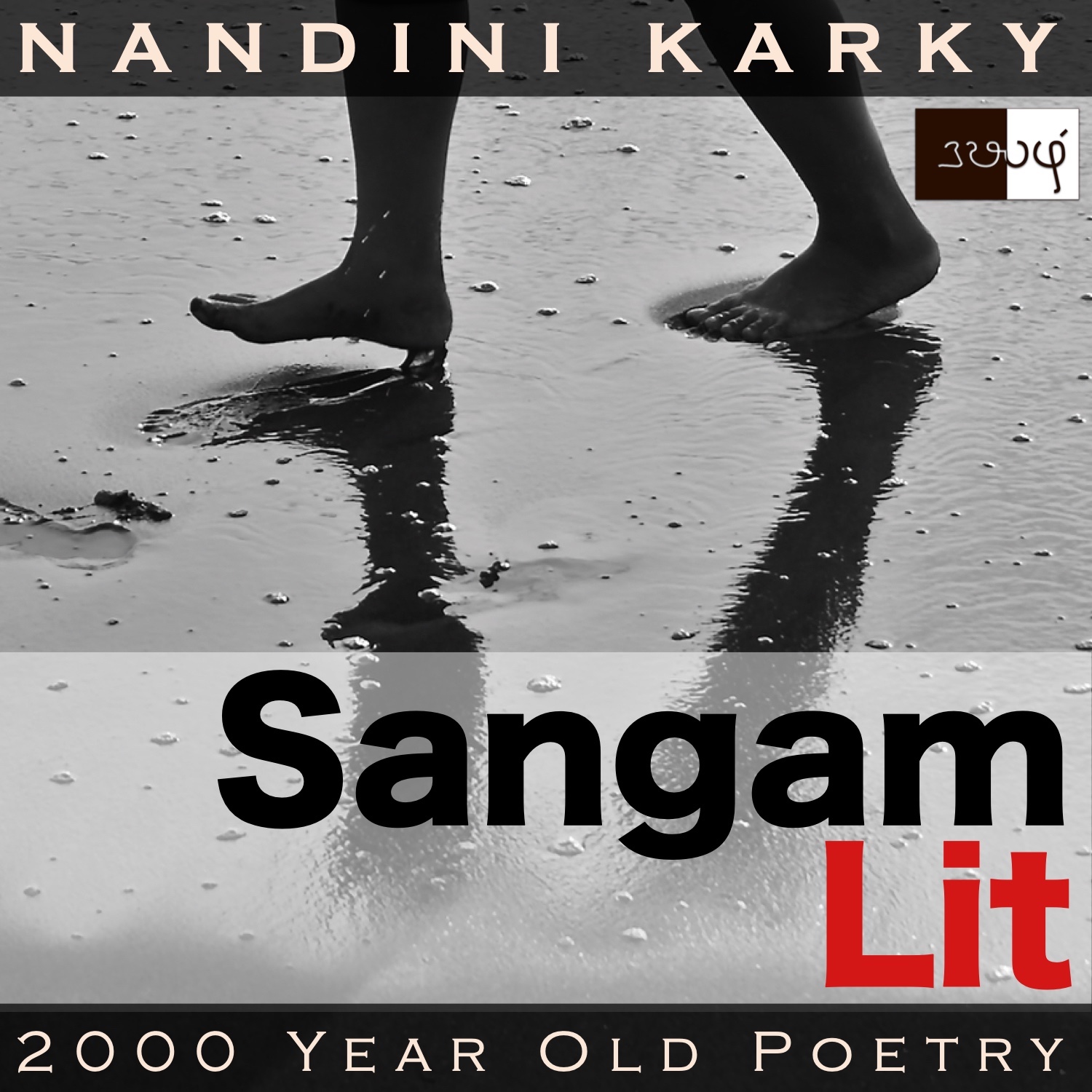Podcast: Play in new window | Download
Subscribe: Apple Podcasts | Spotify | Amazon Music | Android | iHeartRadio | TuneIn | RSS | More

In this episode, we relish the subtle art of persuasion, as portrayed in Sangam Literary work, Natrinai 363, penned by Ulochanaar. Set in the coastal regions of ‘Neythal’, the verse speaks in the voice of the confidante to the man, passing on a hidden message to him.
”கண்டல் வேலிக் கழி சூழ் படப்பைத்
தெண் கடல் நாட்டுச் செல்வென் யான்” என
வியம் கொண்டு ஏகினைஆயின், எனையதூஉம்
உறு வினைக்கு அசாவா உலைவு இல் கம்மியன்
பொறி அறு பிணைக் கூட்டும் துறை மணல் கொண்டு
வம்மோ-தோழி!-மலி நீர்ச் சேர்ப்ப-
பைந் தழை சிதைய, கோதை வாட,
நன்னர் மாலை, நெருநை, நின்னொடு
சில விளங்கு எல் வளை ஞெகிழ,
அலவன் ஆட்டுவோள் சிலம்பு ஞெமிர்ந்து எனவே.
Bringing forth images of ‘lush mangrove forests and marshlands with backwaters’, the verse opens with the words ‘கண்டல் வேலிக் கழி சூழ் படப்பை’. The phrase ‘உலைவு இல் கம்மியன்’ talks about the ‘ever-enthusiastic nature of craftsmen’ then. Thereafter, ‘பொறி அறு’ talks about ‘a clasp that’s broken’ and ‘துறை மணல்’ mentions ‘beach sand’. ‘நெருநை’ is a variant of that beautiful word for ‘yesterday’ – ‘நெருநல்’. The verse ends with ‘சிலம்பு ஞெமிர்ந்து எனவே’ meaning ‘because her anklets are broken’ and highlights an ornament worn in Sangam times, centring which epics have been penned.
The man and lady had been leading a love relationship and the man had been trysting with her for a while. The confidante decides it’s time to guide him towards the proper path. So, one evening, when the man is about to leave, the confidante says to him, “If you say, ‘I’m returning to the land with cool seas, wherein mangroves fence the orchards in the marshes’, and command horses in that path, then do bring sand from your shores and offer that to the goldsmith, who never loses enthusiasm, no matter how hard the work, O lord of the abundant seas! Why because, last evening, my friend, making her fresh green leaves crumple, her garland wither, her few shining bangles slip away, was playing along with you, chasing behind crabs, which caused her anklet to break!” With these words, the confidante expresses her inability to console the lady when the man parts away every evening and in a subtle manner, persuades him to seek her friend’s hand in marriage.
Now, for the etched details! The confidante starts her statement by expressing the words that seemed to be on the man’s mind. She reads this as his intention to leave to his land by the mangroves on the cool shores by the moist sea. So, she tells him that if he plans on going there, he must without fail bring sands from those shores and offer it to a craftsman, who specialises in mending broken gold jewellery. The confidante qualifies this goldsmith as one who works tirelessly and with complete enthusiasm. We can infer that those goldsmiths of yore were a much-content and motivated group of workers! Why must the man bring sand and why must he give it to a goldsmith? A puzzle indeed! The confidante clarifies a little saying that’s because the lady was playing with the man the previous evening, which led to the crumpling of the leaves in her attire and the withering of garlands. In the course of that play in the man’s company, wherein she also chased behind crabs, she broke her anklets. One part of the puzzle is clear and that is the goldsmith is involved because that broken anklet needs to be mended. But still, other questions remain, such as why is it the man’s problem!
To understand this, we need to delve into the social customs involving this ornament. Apparently, women were gifted these anklets by their parents when young and it was something not to be removed until the lady’s marriage. In Natrinai 12, we see how when the lady decides to elope with the man, she will remove the anklets given by her parents and leave it behind. Also, in Natrinai 279, a mother laments because she won’t be the one performing the anklet-removal ceremony for her daughter, as the girl had eloped away. So, in multiple instances, we see the importance accorded to these jewels. And so, when the lady’s anklets are broken, mother is sure to get suspicious of things and it is to avert this, the confidante asks the man to get it mended with the goldsmith before mother learns of this. It is precisely this worry that’s making the lady’s bangles slip away and her confidante finds it impossible to console her. The reason for the man’s involvement is clear now, but still a piece in the jigsaw is missing and that’s the question – what’s sand got to do with mending gold?
I have read about the Japanese art of Kintsugi, wherein broken ceramic and sand bowls, are mended with gold, but here, inversely, sand seems to be needed to mend gold. The only connection I found was a video on how a pan of sand was used as a base when soldering PC boards and learnt that sand distances the heat source and provides even heating. I’m still not sure whether our ancient goldsmith was using the same principle but he sure seems to have needed sand from the shores for his work of mending gold. Returning to the verse, the man on hearing this would understand clearly that the honourable thing to do was not to bring sand to mend that broken anklet but to bring a new golden anklet and claim the lady’s hand in marriage. Fascinating how this skilful negotiation is set around a simple ornament!




Share your thoughts...